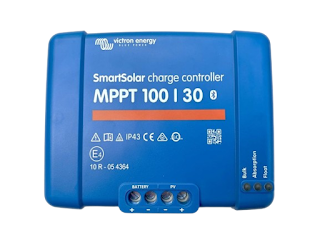Understanding Solar Power System Sizing: Battery Capacity and Solar Array Efficiency
When venturing into the realm of solar energy, one of the primary considerations is designing a system that not only meets your daily energy needs but also efficiently harnesses solar power to ensure reliability. The crux of solar system sizing lies in balancing three critical components: daily energy consumption, solar array size, and battery capacity. Let's delve into how these elements interact and validate the efficiency of the solar array in charging the battery capacity.
The Basics of Solar System Sizing
Daily Energy Consumption
Your journey begins with calculating the total daily energy consumption in watt-hours (WH). This calculation is straightforward: sum up the energy used by all devices and appliances you intend to power. For instance, a device consuming 100 watts for 5 hours a day uses 500 WH/day.
Solar Array Size
Next, we determine the solar array size needed. This involves considering your daily energy consumption, the average number of peak sunlight hours your location receives, and overall system efficiency (usually around 75%). The formula looks like this:
Solar Array Size (W) = Daily Energy Consumption (Wh/day)/(Sunlight Hours (h/day) x System Efficiency)
Battery Capacity
Finally, we calculate the battery capacity required to store enough power. This calculation factors in your daily energy consumption, desired autonomy days (days you want power without sunlight), and the battery's depth of discharge (DoD). The formula is:
Battery Capacity (Wh) = (Daily Energy Consumption (Wh/day) x Autonomy Days)/DoD
A Practical Example
Let's apply these principles to a hypothetical scenario: daily energy consumption of 5000 Wh, average sunlight of 5 hours per day, system efficiency of 75%, and a desired battery autonomy of 2 days with a 50% DoD.
- Solar Array Size: Approximately 1.33 kW (or 1333 W)
- Battery Capacity: 10 kWh (or 10000 Wh)
The crucial question arises: Can this solar array fully charge the 10 kWh battery capacity?
Analyzing Solar Array Efficiency
To address this, we calculate the daily energy the solar array can produce, factoring in sunlight hours and system efficiency:
- Daily Energy Production: 6665 Wh/day ( 1333 W x 5h)
- Usable Energy After Efficiency Considerations: Approximately 4999 Wh/day (6665Wh x 0.75)
The conclusion is clear: the solar array, under ideal conditions, generates about 4.999 kWh of usable energy per day, insufficient to charge the 10 kWh battery from 0% to 100% within a single day.
Key Takeaways
This analysis underscores the importance of accurately sizing your solar power system to ensure it meets your energy requirements efficiently. It's crucial to remember that solar power systems are designed to balance daily consumption with production, with the battery acting as a buffer for nighttime or cloudy days. Full daily charges and discharges are not typically the goal but rather maintaining a consistent supply to meet daily needs.
Designing a solar power system requires careful consideration of these components to achieve energy independence effectively. While the example provided illustrates the basics of system sizing, individual needs may vary, highlighting the importance of tailored system design.
This post aims to provide foundational knowledge on solar power system sizing, demystifying the process and encouraging informed decisions for those considering solar energy solutions.




Comments
Post a Comment